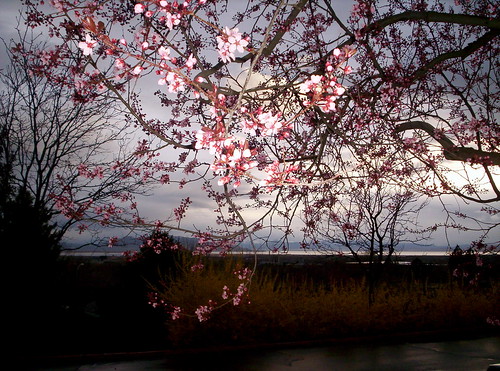 I just finished reading Villette by Charlotte Bronte. It is a remarkable novel that illustrates profoundly the pain and despair that come from friendlessness – yet also the joy found in even the tiniest of friendships.
I just finished reading Villette by Charlotte Bronte. It is a remarkable novel that illustrates profoundly the pain and despair that come from friendlessness – yet also the joy found in even the tiniest of friendships.
After a difficult childhood of abandonment and loss, Lucy Snow feels that no one loves her, and that the future would yield no such love. She becomes an English Teacher at a French girls’ school, and experiences a painful summer all alone at the school – the schoolmistress, other teachers, and pupils leave for vacation. Lucy becomes sick and bed-ridden. A stormy day intensifies Lucy’s despair:
"I do not know … why the raging storm and beating rain crushed me with a deadlier paralysis than I had experienced while the air remained serene: but so it was; and my nervous system could hardly support what it had for so many days and nights to undergo in that huge, empty house. How I used to pray to heaven for consolation and support! ... Methought the well-loved dead, who had loved me well in life, met me elsewhere, alienated: galled was my inmost spirit with an unutterable sense of despair about the future. Motive there was none why I should try to recover or wish to live;" (Villette, p.157-158) Bronte wrote as if she personally knew this emotion. And she’s not the only one to have described loneliness as “paralyzing” and “crushing.” Elder Holland recently described the Savior’s suffering using similar words:
Bronte wrote as if she personally knew this emotion. And she’s not the only one to have described loneliness as “paralyzing” and “crushing.” Elder Holland recently described the Savior’s suffering using similar words:
"I speak of those final moments for which Jesus must have been prepared intellectually and physically but which He may not have fully anticipated emotionally and spiritually—that concluding descent into the paralyzing despair of divine withdrawal when He cries in ultimate loneliness, “My God, my God, why hast thou forsaken me?” (None Were with Him, Elder Holland)
The imagery of the wine-press helps us understand a bit more the depth of the pain our Savior endured. Those who have felt the crushing and paralyzing pain of despair, abandonment and loneliness in their lives certainly understand, in a small way, more of what Christ felt in Gethsemane and at Calvary.
"I speak of the Savior’s solitary task of shouldering alone the burden of our salvation. Rightly He would say: “I have trodden the winepress alone; and of the people there was none with me … I looked, and there was none to help; and I wondered that there was none to uphold [me].”1 … He ventured into the Garden of Gethsemane alone. Falling on His face in prayer, “sorrowful … unto death,”8 the record says, His sweat came as great drops of blood9 as He pled with the Father to let this crushing, brutal cup pass from Him." (None Were with Him, Elder Holland)Truly, the Savior felt all of what humankind is capable of feeling, and also knows what will bring relief to each kind of pain. The author of the character Lucy Snow understood well what would cure her protagonist:
“The mere relief of communication in an ear which was human and sentient, yet consecrated—the mere pouring out of some portion of long accumulating, long pent-up pain into a vessel whence it could not he again diffused—had done me good. I was already solaced." (Villette, p.162) If only a listening ear is required, a warm heart, someone willing to comfort, what greater undertaking can we aspire to than a friend? That is what Christ is to us, our greatest friend. He offers us His comfort, His peace, His embrace, His friendship when we are friendless. It shouldn’t be a one-sided friendship either – Elder Holland said we must be a friend to the Savior, by being His disciple; following Him.
“These scenes of Christ’s lonely sacrifice … must never be reenacted by us. He has walked alone once. Now, may I ask that never again will He … find only unresponsive onlookers when He sees you and me along His Via Dolorosa in our present day…May we declare ourselves to be more fully disciples of the Lord Jesus Christ.” (None Were with Him, Elder Holland)








